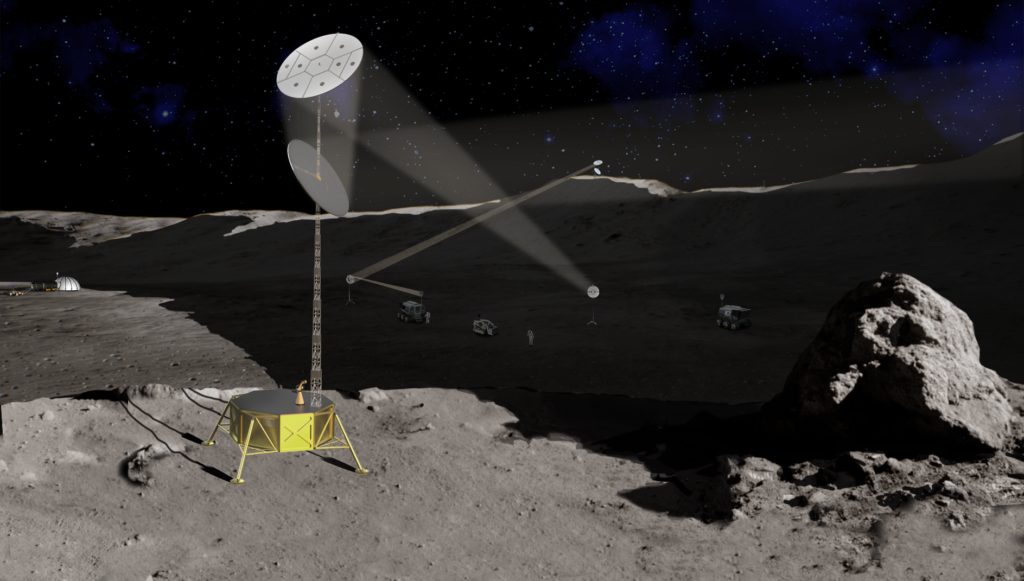
In the quest for establishing a sustainable presence on the Moon, there is a need to address the challenge of shadowed regions that never receive sunlight. To tackle this, a team of robots may be employed to redirect incoming sunlight, according to an announcement by Maxar Technologies in collaboration with NASA.
The system, known as Light Bender, aims to bounce incoming sunlight to dark areas where solar panels can be positioned to provide crucial solar power for various applications. These solar panels could be mounted on rovers, robots, communication systems, habitats, scientific instruments, and other devices that require power. The concept behind Light Bender is ingenious, as it opens up the possibility of delivering solar power to regions such as impact craters that would otherwise remain devoid of sunlight.
Light Bender consists of a 20-meter high telescoping mast with two reflectors, one at the top and another at the bottom. The bottom reflector captures the Sun’s rays and reflects them to the secondary mirror, which then directs the light towards the receiver.
Sean Dougherty, the Chief Robotics Architect at Maxar and the lead for Light Bender, explained the concept, stating, “Part of what we’re doing is conceptually simple, reflecting sunlight to a solar panel located in the dark. Where it gets complex is doing that without humans involved.” Indeed, this task is designated for robots. The company plans to utilize autonomous robots to assemble and deploy the reflectors on the Moon. Dougherty emphasized the magnitude of this undertaking, as the Light Bender reflectors would be the largest ones autonomously assembled in space. To put it into perspective, the ten-meter mirrors would be nearly the width of a tennis court. However, Maxar is confident in its expertise and ability to accomplish this challenging feat.
Maxar Technologies has a history of building robotic components for NASA, including the robotic arms on Mars rovers like Spirit, Opportunity, Curiosity, and Perseverance, as well as the arms for the Phoenix and InSight landers. They are currently working on a robotic arm for NASA’s On-orbit Servicing, Assembly, and Manufacturing 1, a spacecraft designed to service satellites in orbit. Additionally, they are developing the Sample Acquisition, Morphology Filtering and Probing of Lunar Regolith (SAMPLR) arm, specifically designed for lunar missions.
As we look toward a future of lunar exploration and potential habitation, the use of autonomous robots to deploy Light Bender and harness the power of the Sun in previously unreachable areas holds immense promise. This innovative solution demonstrates the ongoing efforts to advance our understanding and utilization of technology in space exploration.